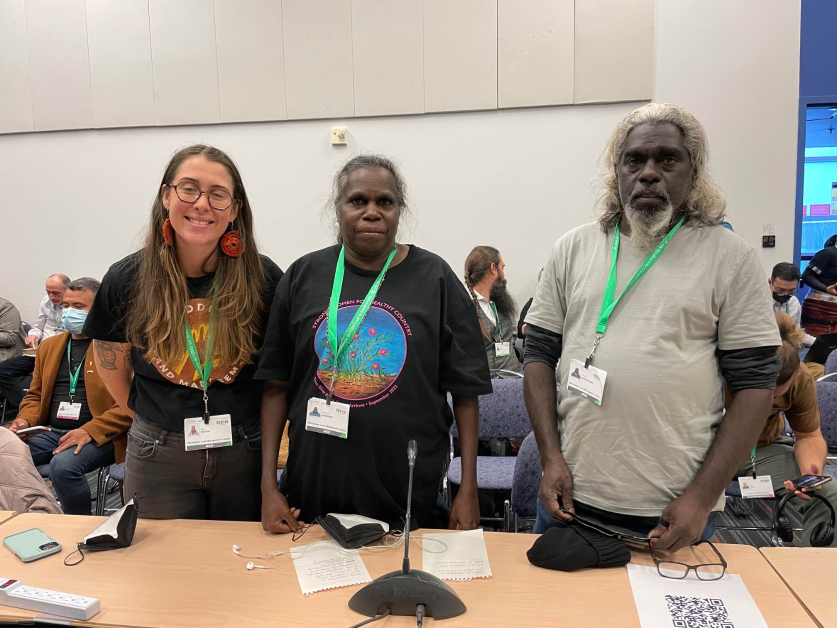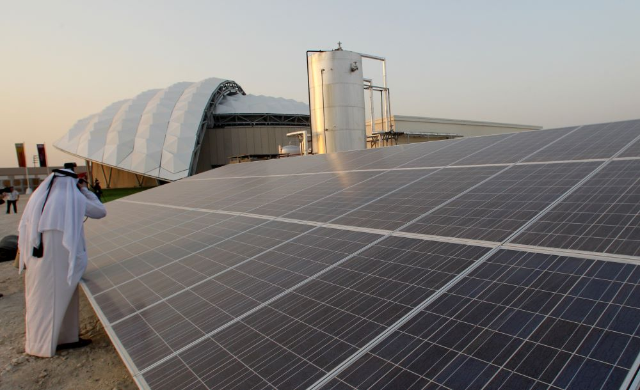|  | Know better. Do better. |  | Climate. Change.News from the ground, in a warming world |
|
| | As the COP15 biodiversity summit took a somewhat dramatic turn in the early hours of Monday, with the Chinese presidency rushing through adoption of a new global nature pact to the consternation of some African nations, indigenous rights groups breathed a sigh of relief.
The headline target of the world's biodiversity framework - to conserve at least 30% of the planet's land, freshwater and marine areas by 2030 - recognises the rights of indigenous peoples and local communities to their land, raising hopes that the abuses of the past will not be repeated.
This - and the fact that indigenous rights have been included in one-third of the new pact's targets - gave advocates cause for cautious celebration in Montreal, after several years of pushing for such a "historic" outcome.
"We feel like it's enough to get things going at the national level, for there to be full partnership between the government and indigenous peoples," said Jennifer Tauli Corpuz, a representative of the International Indigenous Forum on Biodiversity from the Kankana-ey Igorot People of the Philippines.
Here are some examples of why - and how - working with indigenous groups to take care of the Earth's natural ecosystems makes a lot of sense. .png/640w) Cara Penton, Rosemary Nabulwad and Conrad Maralngurra from Warddeken Land Management in Australia’s Northern Territory at COP15 talks in Montreal, Canada, December 11, 2022. Jack Graham/Thomson Reuters Foundation |
Nature positive?Our correspondent on the ground at the two-week talks in Canada, Jack Graham, examined what the deal might mean for how businesses manage their relationship with the natural world.
The final text commits governments to taking measures that will "encourage and enable" companies to monitor and disclose the risks their activities pose to biodiversity, including requirements for large firms and financial institutions to do so.
While it stopped short of making the process mandatory, corporations like fertiliser giant Yara International and consumer goods maker Unilever - which are working towards becoming "nature positive" - got the firm steer they had sought from COP15.
Some advocates, however, worry that broad concepts like "nature positive" will provide cover for greenwashing - and argue the devil will be in the detail.
"It's not that all the private sector is awful (or) all businesses are bad, but the ones that are responsible for biodiversity loss will take advantage of any lack of clarity," warned Mirna Ines Fernández, policy co-coordinator for the Global Youth Biodiversity Network.  Qatar 2022 FIFA World Cup bid team display zero carbon, solar powered cooling technology for open-air stadiums to FIFA inspectors during the FIFA Inspection Visit for the Qatar 2022 World Cup Bid at a showcase stadium in Doha September 14, 2010. REUTERS/Fadi Al-Assaad |
A sporting chanceTools and methodologies being developed to quantify the economic value of keeping ecosystems, plants and wildlife in good health will no doubt help with the mission of curbing the damage that's been done to nature.
Our U.S. reporter Carey L. Biron peers into Hawaii's clear, blue waters, where ecological economist Kirsten L.L. Oleson and her team have been combing through and standardising a mass of data sets – from stocks of fish and the health of various reefs, to where tourists go to whale watch.
The goal is to help guide Hawaii's environmental policy by accounting for the value of nature, and allowing policymakers and the public to see the measurable effects of nature protection and climate change, something the U.S. federal government is for the first time also aspiring to do at the national level.
While it's far from clear whether governments will be able to halt and reverse loss of the planet's biodiversity, as agreed in Montreal this week, nature certainly now has far bigger prominence on the global policy stage, even though the news from COP15 had to compete with Lionel Messi's World Cup glory on the day.
Perhaps sports competitions will one day pay attention to their nature footprint, as well as their carbon emissions and human rights records....
We - like many of our readers - are taking a short rest to recover from back-to-back COPs - see you in the New Year!
Megan |
|
|
| | We asked experts which issues they think will – or should – turn up the heat in the climate conversation | Start-ups are helping Indians shrink the carbon footprint of their travel, celebrations and online shopping | The COP15 biodiversity deal aims to protect and restore degraded ecosystems but experts warn these nature-based solutions can easily go wrong | Britain did not assess the climate threats posed to thousands of asylum seekers it plans to deport to Rwanda, Christian Aid says | Vietnam's climate finance deal with G7 will cut dependency on coal as it seeks to go carbon neutral in a 'just' energy transition | Waste is a huge driver of methane emissions but the Brazilian public widely opposes landfills despite their environmental benefits | |
| | | | | | |
|